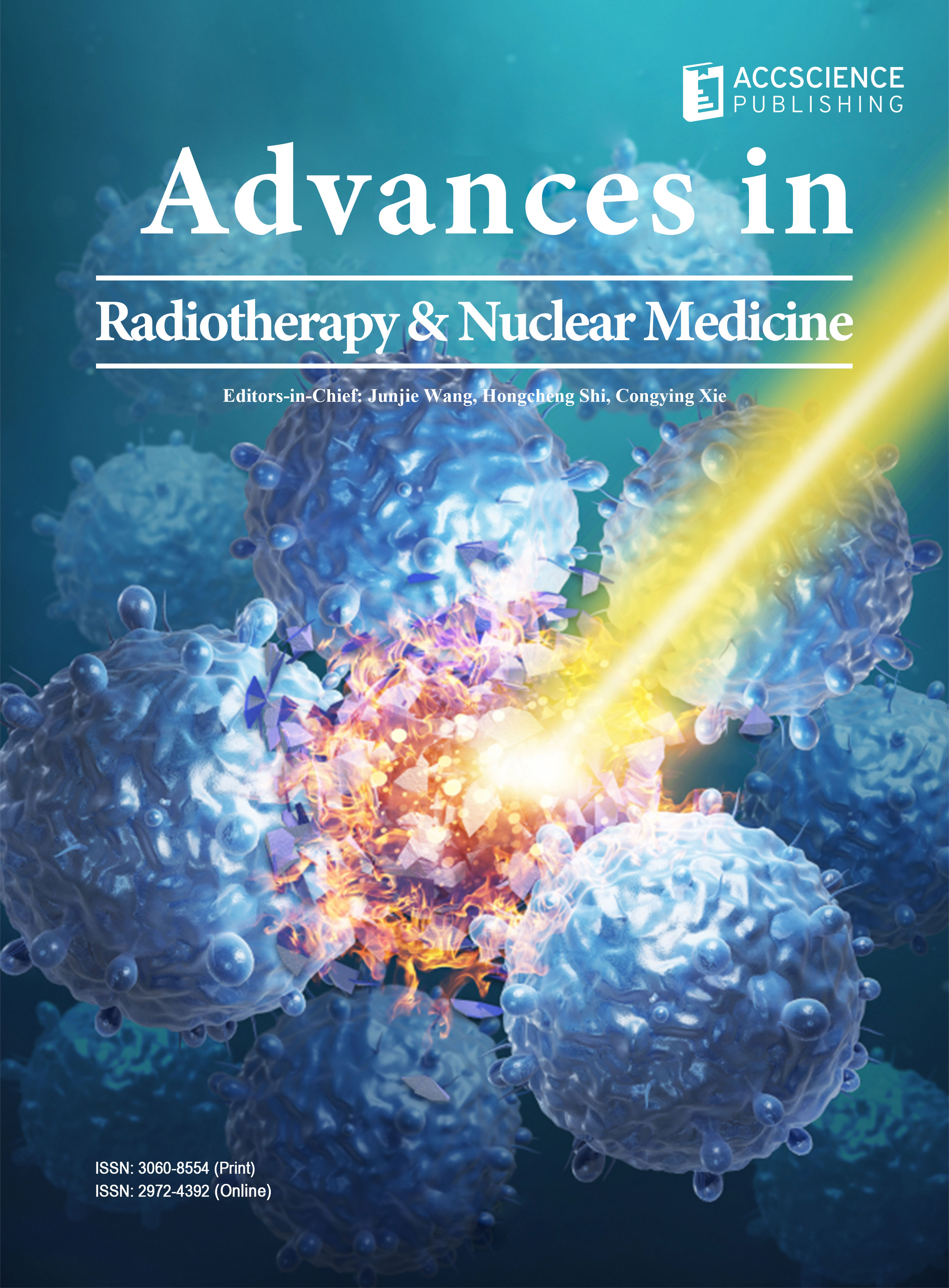Mathematic modeling of the dose in water for calculating collimator scatter factor of flattening filter and flattening filter free megavoltage photon beams

This study presents an empirical method to model the percent depth dose (PDD) curves of flattening filter (FF) and FF-free (FFF) high-energy photon beams using a home-generated buildup function and tail function (buildup-tail function) in radiation therapy. The modeling parameters n and μ of the buildup-tail function were used to characterize the collimator scatter factor (Sc). The buildup function was a quadratic function in the form of d/ √(d2 + n) with main parameters of d (depth in water) and n, while the tail function was in the form of e−μd and was composed of an exponential function with d and μ. PDD was the product of buildup-tail function and characterized by the buildup-tail function by adjusting the parameters n and μ. The Sc of 6 and 10 MV in FF and FFF beams can be expressed simply by the modeling parameters n and μ. The main parameter n increases when photon energy increases. Its physical meaning expresses the beam hardening of photon energy in PDD. The parameter μ can be treated as an attenuation coefficient in the tail function, decreasing when photon energy increases. The values of n and μ obtained from the fitted buildup-tail function were applied into an analytical formula of Sc,FF = nE(S)0.63 μ E, Sc,FFF = nE(S)4.45 μ E to get the Sc of 6 and 10 MV in FF and FFF photon beams, with nE, μ E, S denoting n and μ at photon energy E of field size S. The calculated Sc was compared with the measured data and showed agreement, finding that the field difference was size within ±1%. This model can be used to parameterize the Sc for some clinical requirements. The modeling parameters n and μ can be used to predict the Sc in either FF or FFF beams for the treatment monitor unit in double-check dose calculation. The technique developed in this study can also be used for systematic or random errors in the quality assurance program, thus improving the clinical dose computation accuracy for patient treatment.
- Khan FM, 2010, Dose distribution and scatter analysis. In: Khan FM, editor. The Physics of adiation Therapy. 4th ed. Philadelphia, PA: Lippincott Williams and Wilkins, p140–157.
- Zhu TC, Ahnesjo A, Lam KL, et al., 2009, Report of AAPM Therapy Physics Committee Task Group 74: In-air output ratio, Sc, for megavoltage photon beams. Med Phys, 36: 5261–5291. https://doi.org/10.1118/1.3227367
- Cashmore J, 2008, The characterization of unflattened photon beams from a 6 MV linear accelerator. Phys Med Biol, 53: 1933–1946.https://doi.org/10.1088/0031-9155/53/7/009
- Ahnesjo A, Aspradakis MM, 1999, Dose calculations for external photon beams in radiotherapy. Phys Med Biol, 44: R99–R155. https://doi.org/10.1088/0031-9155/44/11/201
- Fippel M, Haryanto F, Dohm O, et al., 2003, A virtual photon energy fluence model for Monte Carlo dose calculation. Med Phys, 30: 301–311. https://doi.org/10.1118/1.1543152
- Ulmer W, Pyyry J, Kaissl W, 2005, A 3D photon superposition/convolution algorithm and its foundation on results of Monte Carlo calculations. Phys Med Biol, 50: 1767–1790. https://doi.org/10.1088/0031-9155/50/8/010
- Georg D, Kragl G, Wetterstedt SA, et al., 2010, Photon beam quality variations of a flattening filter free linear accelerator. Med Phys, 37: 49–53. https://doi.org/10.1118/1.3264617
- Petti PL, Goodman MS, Sisterson JM, et al., 1983, Sources of electron contamination for the Clinac-35 25-MV photon beam. Med Phys, 10: 856–861. https://doi.org/10.1118/1.595348
- Bjarngard BE, Rashid H, Obcemea CH, 1989, Separation of primary and scatter components of measured photon beam data. Phys Med Biol, 34: 1939–1953. https://doi.org/10.1088/0031-9155/34/12/017
- Gibbons JP, Antolak JA, Followill DS, et al., 2014, Monitor unit calculations for external photon and electron beams: Report of the AAPM Therapy Physics Committee Task Group No. 71. Med Phys, 41: 031501. https://doi.org/10.1118/1.4864244
- Wang KKH, Zhu TC, 2010, Modeling scatter-to-primary dose ratio for megavoltage photon beams. Med Phys, 37: 5270–5278. https://doi.org/10.1118/1.3480480
- Palta JR, Purdy JA, Reinstein LE, et al., 1994, Comprehensive QA for radiation oncology: Report of AAPM Radiation Therapy Committee Task Group 40. Med Phys, 21: 581–618. https://doi.org/10.1118/1.597316
- Padilla-Cabal F, Perez-Liva M, Lara E, et al., 2015, Monte Carlo calculations of an Elekta Precise SL-25 photon beam model. J Radiother Pract, 14: 311–322. https://doi.org/10.1017/S146039691500014X
- Niroomand-Rad A, Chiu-Tsao ST, Grams MP, et al., 2020, Report of AAPM task group 235 radiochromic film dosimetry: An update to TG-55. Med Phys, 47: 5986–6025. https://doi.org/10.1002/mp.14497
- Lewis D, Micke A, Yu X, et al., 2012, An efficient protocol for radiochromic film dosimetry combining calibration and measurement in a single scan. Med Phys, 39: 6339–6350. https://doi.org/10.1118/1.4754797
- Garcia-Garduno OA, Larraga-Gutierrez JM, Rodriguez-Villafuerte M, et al., 2016, Effect of correction methods of radiochromic EBT2 films on the accuracy of IMRT QA. App Radi Isot, 107: 121–126. https://doi.org/10.1016/j.apradiso.2015.09.016
- Van Gasteren JM, Heukelom S, van Kleffens HJ, et al., 1991, The determination of phantom and collimator scatter components of the output of megavoltage photon beams: Measurement of the collimator scatter part with a beam-coaxial narrow cylindrical phantom. Radiother Oncol, 20: 250–257. https://doi.org/10.1016/0167-8140(91)90124-y
- Dutreix A, Bjarngard BE, Bridier A, et al., 1997, Monitor Unit Calculation for High Energy Photon Beams. Estro Booklet No. 3. Leuven: Garant.
- Sterling TD, Perry H, Katz L, 1964, Automation of radiation treatment planning. IV. Derivation of a mathematical expression for the per cent depth dose surface of cobalt 60 beams and visualisation of multiple field dose distributions. Br J Radiol, 37: 544–550. https://doi.org/10.1259/0007-1285-37-439-544

